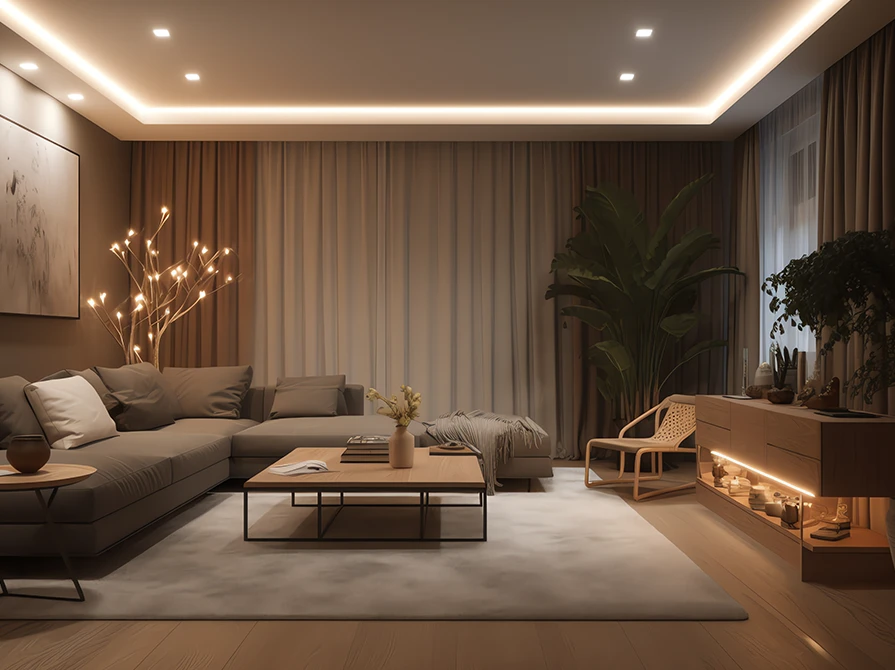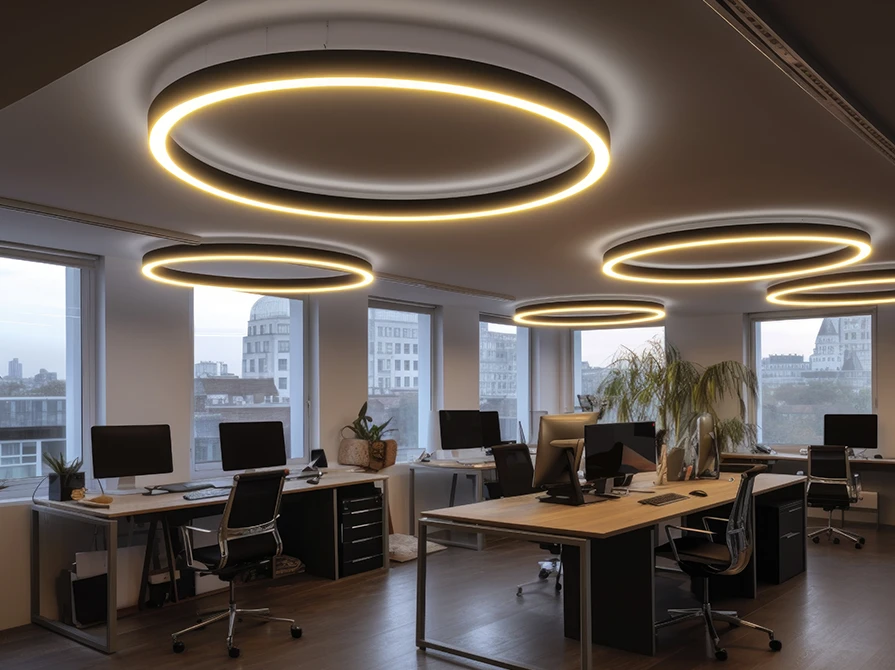Minimising Glare: Innovative Lighting Solutions to Improve Comfort and Productivity
In modern workplaces, lighting plays a crucial role in ensuring comfort and productivity. One of the most common issues in work environments is glare, which can lead to eye strain, headaches, and reduced efficiency. Glare occurs when there is excessive brightness contrast or uncontrolled light, causing discomfort and visual impairment. This blog explores innovative lighting solutions that can help banish glare, thereby improving both comfort and productivity in the workplace.
Understanding Glare and Its Impacts
Types of Glare
- Direct Glare: This type occurs when a light source is directly in the line of sight, causing visual discomfort. Examples include overhead lights or sunlight streaming through a window.
- Reflected Glare: This occurs when light reflects off surfaces such as computer screens, glossy desks, or windows, creating annoying reflections that can impede vision.
- Disability Glare: This type reduces visibility and contrast, making it difficult to see. It often occurs when bright light sources are present in a dark environment.
Impacts of Glare
- Visual Discomfort: Glare causes eye strain and discomfort, making it difficult for employees to focus on their tasks.
- Reduced Productivity: When workers struggle with glare, their efficiency and productivity can decline significantly.
- Health Issues: Prolonged exposure to glare can lead to headaches, fatigue, and long-term vision problems.
Innovative Lighting Solutions to Combat Glare
1. Task Lighting
Task lighting provides focused illumination for specific tasks, reducing the need for excessive overhead lighting and minimizing glare. Adjustable desk lamps or under-cabinet lights can direct light precisely where it is needed, without causing direct glare.
Benefits:
- Enhances focus by providing adequate light for specific tasks.
- Reduces the need for high-intensity general lighting, thereby minimizing glare.
- Allows for customizable lighting settings to suit individual preferences.
2. Indirect Lighting
Indirect lighting involves directing light towards ceilings or walls, which then reflect the light into the room. This method diffuses light evenly, reducing harsh shadows and glare.
Benefits:
- Creates a soft, evenly distributed light that minimizes direct glare.
- Enhances the aesthetic appeal of the workspace by eliminating harsh lighting contrasts.
- Can be integrated with architectural features for a seamless look.
3. Anti-Glare Screens and Filters
Using anti-glare screens or filters on computer monitors and other digital displays can significantly reduce reflected glare. These accessories help diffuse light and prevent reflections, making screens easier to read.
Benefits:
- Improves visibility on screens by reducing reflections and glare.
- Protects eyes from strain caused by prolonged screen use.
- Enhances productivity by providing a clearer view of digital content.
4. Adjustable Blinds and Shades
Controlling natural light is essential in managing glare. Adjustable blinds and shades allow employees to control the amount of sunlight entering the workspace, reducing both direct and reflected glare.
Benefits:
- Provides control over the intensity and direction of natural light.
- Helps in maintaining a comfortable light level throughout the day.
- Enhances energy efficiency by reducing the need for artificial lighting.
5. Light Diffusers
Light diffusers are materials that scatter light, reducing its intensity and spread. Using diffusers on overhead lights can soften the light, reducing direct glare and creating a more comfortable environment.
Benefits:
- Softens harsh light and reduces direct glare.
- Distributes light evenly across the workspace.
- Enhances visual comfort by reducing shadows and bright spots.
Advanced Solutions to Get Rid of Glare
1. LED Lighting
LED lights are highly energy-efficient and can be designed to reduce glare. LEDs can be dimmed and controlled precisely, providing the right amount of light without causing visual discomfort.
Benefits:
- Energy-efficient and long-lasting, reducing operational costs.
- Provides consistent, flicker-free light that minimizes eye strain.
- Can be integrated with smart controls for adjustable lighting levels.
2. Human-Centric Lighting
Human-centric lighting systems are designed to mimic natural light patterns, supporting the human circadian rhythm. These systems adjust the color temperature and intensity of light throughout the day, reducing glare and enhancing well-being.
Benefits:
- Supports natural sleep-wake cycles, improving overall health and productivity.
- Reduces glare by providing appropriate light levels for different times of the day.
- Enhances mood and cognitive function through optimized lighting conditions.
3. Smart Lighting Controls
Smart lighting systems use sensors and automation to adjust lighting based on occupancy, natural light levels, and time of day. These systems can reduce glare by ensuring that lighting is always at optimal levels.
Benefits:
- Automatically adjusts lighting to reduce glare and enhance comfort.
- Increases energy efficiency by using light only when needed.
- Provides customizable lighting settings for different tasks and preferences.
Design Ideas for Low-Glare Environments
1. Proper Fixture Placement
The placement of lighting fixtures is crucial in reducing glare. Fixtures should be positioned to avoid direct light in the line of sight and minimize reflections on surfaces.
- Position lights above or behind workstations to avoid direct glare.
- Use indirect lighting techniques to illuminate work areas softly.
- Ensure that fixtures are not aligned with reflective surfaces.
2. Use of Matte and Non-Reflective Surfaces
Incorporating matte and non-reflective materials in the workspace can reduce reflected glare. Desks, walls, and floors with matte finishes absorb light rather than reflecting it, minimizing glare.
- Reduces the likelihood of reflections that cause visual discomfort.
- Enhances the overall aesthetic of the workspace with a modern, non-glossy finish.
- Improves focus and productivity by providing a low-glare environment.
3. Regular Maintenance and Upgrades
Regular maintenance of lighting systems ensures that fixtures and controls function correctly, reducing the risk of glare. Upgrading to newer, more efficient lighting solutions can also help maintain optimal lighting conditions.
- Clean light fixtures regularly to maintain brightness and efficiency.
- Replace outdated fixtures with modern, low-glare lighting solutions.
- Conduct periodic lighting audits to identify and address glare issues.
Lighting the Way to Low-Glare Comfort and Productivity
Banishing glare from the workplace is essential for creating a comfortable and productive environment. As we continue to explore advanced lighting technologies, the goal remains clear: to provide optimal lighting conditions that support comfort, health, and productivity in modern workspaces.
Investing in low-glare lighting solutions is not just about improving visual comfort; it's about creating an environment where employees can thrive. By prioritizing proper lighting design, businesses can foster a workplace culture that values well-being and efficiency, ultimately leading to greater success and satisfaction for both employees and the organization as a whole. Get in touch with us to know how our lighting solutions can help you provide a safe and comfortable workplace to your employees.










